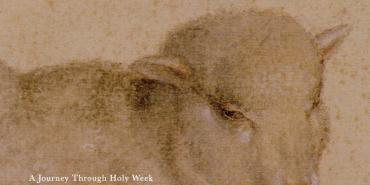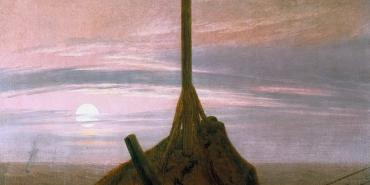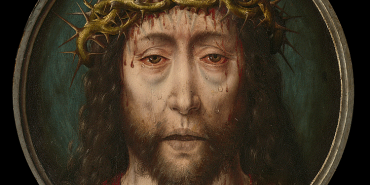In the Light of That Star

Epiphany . . . January 6 . . . twelfth night . . . the wise men. Epiphany has special meaning when we think of this day in the church calendar as a time of special manifestation of the Christ, not only to the wise men, but also to us. A special symbol of that manifestation is the star: “When they saw the star, they rejoiced with exceeding great joy” (Matt. 2:10).
The star . . . light . . . radiance. In all of our celebration of Christmas there is light: lights in windows, lights strung on trees outdoors and in our living rooms, candles at church and at home, candles held by children, flashlights held by carolers. There are colored lights and white lights, steady lights and flashing lights.
For the past three years, the annual Christmas chapel at Eastern Nazarene College has been held in the gymnasium. One of the most beautiful parts of that special musical celebration has been the processional of the A Capella Choir singing “Angels We Have Heard on High” as they enter the darkened gym, each singer holding a lighted candle and forming the outline of a Christmas tree on the bleachers opposite the audience.
It is always a lovely sight, but one year I chanced to remove my glasses as I as watching the choir. Suddenly, I saw the candle glow in a way which I had never before experienced. Each candle was a pinpoint of light surrounded by a dark rim from which radiated irregular rays of light. (It was a child who described these very aptly to one of my friends: “Without my glasses the lights look like doilies.” Precisely!)
I have thought a great deal about that experience. It was an aesthetic and emotional moment for me—almost an epiphany itself. However, when I told my physicist son about the phenomenon, his response was “Mom, your eyes must be really bad. That’s the way the stars look through a telescope that’s badly out of focus.” Really? Was my vision then just something out of focus? Was it that far off? What is the real light?
I am not a physicist, and I don’t propose to analyze light scientifically. But it is significant that light is associated with the revelation or manifestation of God—with Epiphany.
From Genesis to Revelation there is light.
We read in the first chapter of the Bible, “And God said, ‘Let there be light,’ and there was light. And God saw the light that it was good; and God divided the light from the darkness.” The Psalmist wrote, “The Lord is my light and my salvation.” And John, in the closing description of the New Jerusalem wrote, “And the city hath no need of the sun, neither of the moon, to shine upon it: for the glory of God did lighten it, and the lamp thereof is the Lamb.”
When Dante tried to express the ineffable vision of God in Paradise, he used again and again the metaphor of light:
O Light Eternal, fixed in Itself alone,
by Itself alone understood, which from Itself
loves and glows, self-knowing and self-known.1
This past fall while I was teaching Dante and my mind was full of these images of light, I walked to my office just as the sun was blazing over the campus. It was the first glimpse of the sun after a gloomy week of rain; the light was most welcome and glorious, a symbol to me of what light could mean to our lives.
It was John in his Gospel who most clearly associated the coming of Jesus with light: “In him was life and the life was the light of men. The light shines in the darkness, and the darkness has not overcome it. . . . The true light that enlightens every man was coming in to the world” (John 1:4-5, 9, RSV).
It is this Light which is really celebrated at Christmas—not just the star which guided the wise men and which came and “stood over where the young child was.” There is a Christmas song which has in it the phrase, “In the light of that star.” I was struck recently by the play on words in that phrase. “In the light of that star” can have a literal meaning: “by the illumination given off by the star”; but it can also have a figurative meaning: “with the help afforded by knowledge of the star” or “in the aspect or character of the star.”
Thus, the coming of the Christ was a new manifestation of the Light which is both our illumination and our salvation. He is the Light which shines in the darkness of our world. In the words of the familiar carol, he is “Love’s pure light.” Dante alluded to it in these words from the Paradiso:
O Threefold Light which, blazoned in one star,
can so content their vision with your shining,
look down upon us in the storm we are!2
There are five different aspects of light that I would like to suggest. First, light is creation. When God said, “Let there be light,” His cosmic energy was separating light from the darkness of chaos. Light, said Milton, was the firstborn of creation; without light there is no creation. Only light reveals the contours of the creature blurred in darkness.
The Hebrews understood creation as the imposing order on chaos.
In separating light and dark, God pushed chaos into night.
He subjected it to order. John was affirming this creative power of light when he wrote, “The Light shines in the darkness and the darkness has not overcome it.”
Light is also the light of salvation. This aspect is closely allied to the first, for there is almost a universal association of darkness with evil, and just as God created the universe by imposing order on chaos, by separating light and dark, so He imposes order on the chaos of our world. Thus, in Dante’s Divine Comedy, the traveler journeys from the darkness of sin (represented by the Inferno) to Paradise and the light of God’s presence.
The third aspect of light is illumination expressed so often in the Psalms and Proverbs as “the lamp to my feet.” God’s light is a guide to conduct and right living.
Related to this is the fourth aspect which forces me to mix metaphors and speak of “inspiration,” which etymologically is related to “breathing,” “inspiriting.” The point is, the illumination provided by “the light of that star” comes to the mind and heart as much as to the feet. God can be the Source of mental activity and of creativity. This is the light of the Holy Spirit, which the blind Milton requested for his great poetry.
Finally, God’s light is the glory spoken of in Revelation, where there is no need of sun in the New Jerusalem, since God’s glory is the light. This is the Beatific Vision and the overwhelming experience of God’s presence which Dante described and which has been the experience of mystics and saints throughout the ages.
But what of my vision of light, the out-of-focus view of candles as “doilies”? Can that have been an epiphany? Was I seeing “Love’s pure light”? Or, was it my imperfect and slightly idiosyncratic and very nearsighted perspective? I don’t really want to deny the experience, in spite of my realization that it was distorted. I sometimes take off my glasses deliberately in order to enjoy a new perspective.
However, the Light comes to us corporately as well as individually, and we constantly compare and relate our individual experience to the collective experience of the community. Moreover, as members of the community, we are ourselves lights in a dark world. Jesus at one time said, “I am the light of the world,” but at another time He told His disciples—and us—“You are the light of the world.”
We are also aware that our vision of the Light is imperfect because we are finite. Paul reminds us that “now we know in part . . . we see through a glass darkly” (1 Cor. 13:12).
On another morning as I walked to campus, there was a haze which filled the sky, and I was able to look directly at the sun. It was a beautiful and moving sight, but it was not pure light since it was veiled, and obviously I would not have been able to look directly at the sun without the haze. All of Dante’s efforts to express the ineffable ultimately fail, because his finite mind could not totally grasp or describe pure light. Neither can ours.
We can only acknowledge that “in the light of the star,” we find illumination and salvation.
Ruth A. Cameron taught at Eastern Nazarene College for over 40 years, retiring as the Munro Professor of Literature. She passed away in 2013. The Ruth Cameron Auditorium at ENC is named in her honor.
Originally published in Herald of Holiness, January 1, 1977
1. Dante, The Paradiso, trans. John Ciardi (New York: New American Library, 1970).
2. Ibid.
Please note: This article was originally published in 1977. All facts, figures, and titles were accurate to the best of our knowledge at that time but may have since changed.




